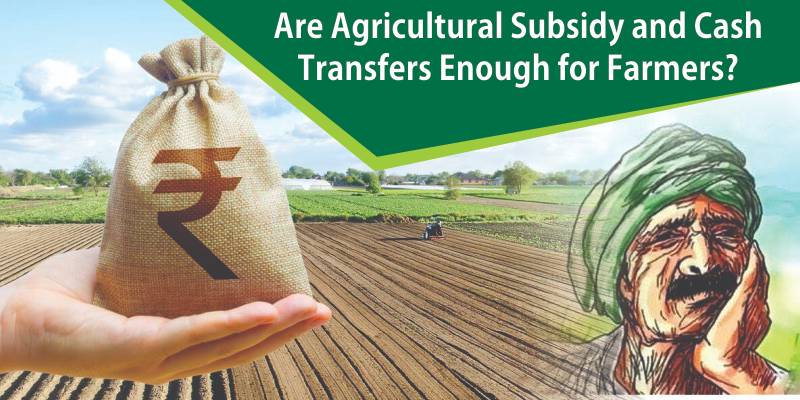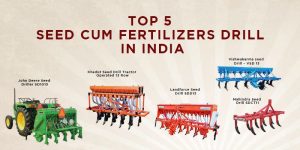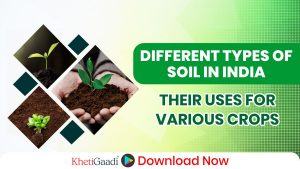Agricultural Subsidy
The agriculture sector plays a vital role in Indian economic growth because about 55 percent of the rural peoples depend on agriculture as their principal source of livelihood. But the contribution of agriculture and allied sectors is about 18 percent to the GDP in India. We can clearly see that the difference between the input and output of the agricultural sector. So, the Government of India decided to adopt a positive approach and play a vital role in the development of the agricultural sector.
The Agricultural Subsidy is the most important part of the farmers in India. This is very important for the growth of small and marginal farmers and overall agricultural development in India. Agricultural subsidies have a direct impact on the tax system in India.
Main Issue About Agricultural Subsidy
Subsidies and investments in the Indian agriculture sector provide very low marginal returns in both agricultural growth and poverty level. If we want sustainable growth in rural infrastructure, then we have to provide long-term solutions to poverty reduction and agricultural growth. Promotion of non-agricultural sector is also sometimes become important, so government should cut the farm subsidies and provide another perfect solution for agricultural growth. Current question is that should we replace Agricultural Subsidy with direct cash transfer? Are farm subsidies and cash transfers enough for farmers?
Current Subsidy Status in India
According to the year 2018-19, the Government of India spent about Rs. 2.56-lakh crore on different subsidies in the agricultural sector in India. And This figure increased in the next year due to the higher MSP on various crops. Now Indian small and marginal farmer enjoys various subsidies like free power, water, and fertilizer subsidy. Loans, MSP, and crop insurance also provide agricultural security in India.
Is Agricultural Subsidy Being A Drain on Public Finance?
Agricultural Subsidies are reducing the contribution of money that goes for capital investment and this is the key reason for the poverty sufferings of farmers. Just offering high costs on agricultural inputs could help farmers to produce and earn more? No, because lack of infrastructure, lack of modern technology in the farm sector show negative impact on the agricultural sector, just a small amount of money will not so much contribute to the growth of the agricultural sector.
Another negative impact of subsidies on public behavior and public finance is the unmindful use of resources such as water and power because they are free. Instead of that sustainable power sources like solar power units are the best solution for agricultural growth rather than providing free sources. Subsidies on fertilizers like urea have resulted in the overuse of nitrogenous or chemical compounds that spoilt soil health. And high subsidies on power and water have resulted in depletion of the groundwater level in India because of overuse. And Monoculture has resulted in an increase in pest and disease attacks on crops.
We can say that subsidy-driven agriculture is not sustainable, we must develop another technique for sustainable development in agriculture.
Way to Sustainable Agricultural Growth
Subsidizing the cost of inputs in the agriculture sector is not the perfect solution to the problems of the marginal farmers of India. But completely stopping subsidies also put so much controversial impact in the farming community, so it is not possible. So, the solution is that subsidies should offer according to the size of the farmland rather than offering them to every other farmer.
To avoid intermediate leakages of money Government of India come with Direct Benefit Transfer. This is the perfect solution because it reduces money loss and provides the exact benefit that who really required.
Instead of subsidies in the agriculture sector Government of India can improve capital investment in the agriculture sector, which may go perfect for sustainable agricultural growth. Capital investment may impact more positively on agricultural produce and poverty level will than that of farm subsidies.
There is the necessity for perfect policies on export trade, this may help farmers to get more income from their agricultural produce.
Rather than Subsidies Government of India should look at the digitization of the farming community and effective use of farm mechanization in small landholding.
Agricultural subsidies make both positive & negative impacts on the agriculture sector. We can say that without the help of farm subsidies and the support of a huge farming community in India, sustainable development of the agriculture sector is very difficult.
We can’t measure the impact of farm subsidies on the agricultural sector because it has both sides. Are subsidies being beneficial to agriculture? is a big question. Some agriculture experts suggested that subsidies should be withdrawn and improve the efficiency of resource use, funds for public investment in the agriculture sector. But on the other hand, agriculture production and income of farmers may be decline if subsidies will cut. Because of corruption, ineffective management, and an uneducated farming community, farm subsidies are not reaching the farmers.
Subsidies and sustainable growth in the agriculture sector are very important issues and they need serious research and development in the future.
Download the KhetiGuru Mobile Application for more details of the agricultural sector in India.
Visit our page for more information about Tractor, Agricultural implements, Tractor Price, Tractor Videos, and Tractor Games.




